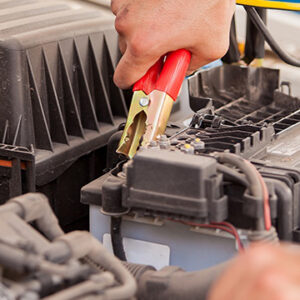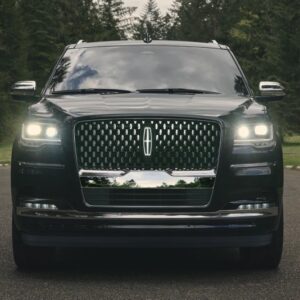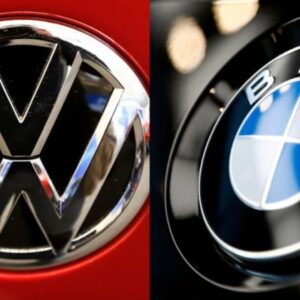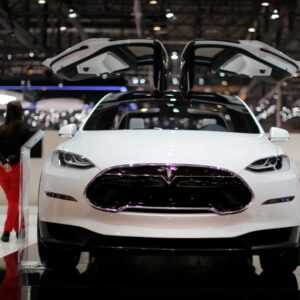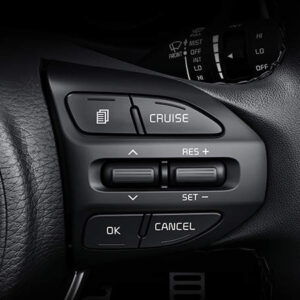Does cruise control save gas? Cruise control can help save on gas if used on flat road conditions that are free from traffic congestion. However, it is not recommended when driving on mountainous terrain.
What Is Cruise Control?
To answer the question, let’s start from the very beginning. If your car has a cruise control function, there’s an electric system under the hood. Its primary function is to help you drive at a constant speed, letting you take your foot off the acceleration pedal. In essence, it completely takes control of the throttle, requiring no human input.

This system has been extensively upgraded throughout the years. Today, the leading edge of cruise control is the adaptive version. It allows you to set and maintain the desired speed and keep a safe distance from other cars on the road. Adaptive cruise control uses forward-mounted sensors and can even slow down with the traffic.
This technology is a definite step toward full automation and brings various benefits to the consumer.
Does Cruise Control Save Gas?
Generally speaking, yes. Cruise control can help you become more fuel-efficient and can help you save an average of 7-14% on gas thanks to its ability to maintain a continuous speed. In comparison, the constant change in acceleration and deceleration of the driver placing their foot over the pedals can eat more gas.
Based on a study conducted by Natural Resources Canada, the vehicle depleted 20% more gas when the speed of the car fluctuated between 47 and 53 mph (75 to 85 kph) every 18 seconds as to calibrating the cruise control to 50 mph (80 kph).
Keep in mind, cruise control is only fuel-efficient when used on flat road conditions that are free from traffic congestion or on even uphill or downhill drives. However, if you are driving on hill conditions that change perpetually or sharp inclines, it is recommended to deactivate the cruise control function.
Supposedly, high-quality cruise control systems should be able to handle sudden hills, but bear in mind the outcome differs vehicle by vehicle. Ultimately, the biggest advantage of using cruise control is its ability to lessen the feeling of fatigue of the driver during long-distance driving, while maintaining fuel-efficiency by eliminating unnecessary acceleration and deceleration.
Effective Ways To Save Gas
Although cruise control is fuel-efficient, there are many other ways to do so. Here are some additional tips to help improve your gas usage:
Drive progressively
By gradually accelerating from 0-60 at approximately 15 seconds instead of aggressively mashing the gas pedal and speeding up within 10 seconds, test results show that you could be potentially saving up an average of 31-37% on fuel instead of seeing it wash down the drain.
The slower the speed, the more you save
As you may already know, most vehicles on the freeway are usually going anywhere between 75-90mph even though the speed limit is 65-70mph. But by going at such a fast speed, it is inefficient. Similar to tip #1, the slower you drive, the more cost-efficient you become and by doing so, you could be saving an average of 12-14% on fuel.
If you aren’t using it, turn it off
If you’re stuck in traffic and forced to stop for longer than a minute or 2, it is recommended to turn off your engine instead. With this simple step, it can help you save up to 19% on the cost of fuel.
How Much Fuel Does Cruise Control Save?
How jerky is your ankle? A Natural Resources Canada study found that setting the cruise control at 80 kph (49.7 mph) versus cycling from 75 to 85 kph (46.6 to 52.8 mph) every 18 seconds consumes 20 percent less fuel (and dramatically reduces motion sickness). Studies by CNN/Money and others quote more modest claims in single-digit percentages.
Is Cruise Control Bad For Your Car?
Absolutely not. Acceleration that costs fuel also causes wear and tear on the driveline, so cruise control is good for the car.

BIG CAVEAT: Cruise control should not be used in heavy rain, snow, or at temperatures where ice could form, because any acceleration on slick surfaces or while hydroplaning can induce an under- or oversteer event, and/or a resulting stab at the brake pedal to unset the cruise control can result in loss of control and an accident.
Does A/C Or Open Windows Use More Gas?
The engineer’s answer is that the energy required to overcome aerodynamic drag varies with the cube of the vehicle’s speed, so for every vehicle there will be a particular speed at which opening the windows causes more drag and energy use than powering the air-conditioning compressor would.
On older, less aerodynamic vehicles with primitive A/C systems, it’s generally best to lower the windows at city speeds and run the air at highway speeds. But new vehicles feature highly efficient climate-control systems, employing variable-output compressors, humidity sensors, and in some instances heat-pump technology.
Newer vehicles also tend to have more aerodynamic body shapes that are compromised more by opening the windows. So if they’re driving a modern vehicle, even the most avid green-niks should feel no guilt driving in climate-controlled comfort.
Should I Turn Off My Car To Save Gas?
If you’ve clicked and scrolled this far down and your vehicle is equipped with auto-stop/start, then absolutely leave it on! Without that system and the fortified battery and starter that comes with it, it’s not wise to shut off the engine every time your vehicle stops.
But if you’re likely to stand still for most of a minute or more—at a notoriously long red light or while waiting in a drive-thru line or for a fuel pump to open up—and you last switched the engine off several minutes ago, then by all means key off.
There are smartphone apps that can help. EnLighten counts down the time remaining before a red light turns green in the cities of Portland and Eugene, Oregon; Pasadena, Arcadia, and San Jose, California; Salt Lake City and Provo, Utah; Garland, Texas, and Las Vegas, Nevada.
No-Cost Gas-Saving Tips
Without renting wind tunnel time you can easily improve your vehicle’s aerodynamics by removing roof rack cross bars and mounts for occasionally carrying bikes, kayaks, skis, or luggage.
If you’ve added those dope-looking aftermarket wings, air dams, and spoilers, removing them will boost efficiency. Without fabricating a new aluminum or carbon-fiber hood or doors, you can “lightweight” your own car by jettisoning all of those “just in case” items in your trunk and just carry a charged phone.

Look farther ahead than the car in front of you to try and anticipate lights and stop signs so you can coast longer and brake less. And of course the most effective, least heeded or appreciated advice is to simply drive slower (see the first line of the paragraph above).
Benefits Of Cruise Control
Your cruise control performance is directly dependent on various road conditions, year, and make of the car model. However, no matter how or where you drive, you will always benefit from having this system in the following way:
- It’s easy to use. Most systems have designated buttons for increasing and decreasing the speed. Then there’s also the adaptive version, which helps keep a safe distance.
- Helps improve driver focus. It allows the person behind the wheel to focus on the road instead of maintaining speed while making driving as comfortable as possible.
- Reduces speeding tickets. As the car will be maintaining a constant speed, it’s useful for those who step on the gas pedal too much. There are no guarantees, but it should at least help you on the highways.
FAQs
Do cars save gas on cruise control?
Generally speaking, yes. Cruise control can help you become more fuel-efficient and can help you save an average of 7-14% on gas thanks to its ability to maintain a continuous speed. In comparison, the constant change in acceleration and deceleration of the driver placing their foot over the pedals can eat more gas.
Why does cruise control use more fuel?
With cruise control turned on, your car will be slower to react to any inclines in the road, so it will accelerate for longer than a driver usually would. Any automatic acceleration from the car also means more fuel consumption.
Does AC use more gas?
As a general answer, a Consumer Reports study found that, yes, running the AC does reduce gas mileage. Here are some tips to help you balance your fuel consumption with comfort. Generally, the air conditioner uses gas, so use it wisely.
Above is information about Does cruise control save gas? that we have compiled. Hopefully, through the above content, you have a more detailed understanding of Effective ways to save gas Thank you for reading our post.
